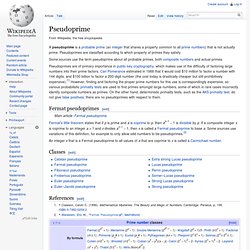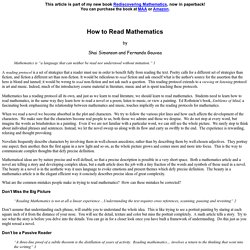

Slimfigures-arithmetic.jpg (JPEG Imagen, 550x1848 píxeles) - Aurora. Mushroom Life - Aurora. The Thirty Greatest Mathematicians - Aurora. Click for a discussion of certain omissions.

Please send me e-mail if you believe there's a major flaw in my rankings (or an error in any of the biographies). Obviously the relative ranks of, say Fibonacci and Ramanujan, will never satisfy everyone since the reasons for their "greatness" are different. I'm sure I've overlooked great mathematicians who obviously belong on this list. Please e-mail and tell me! Following are the top mathematicians in chronological (birth-year) order. Earliest mathematicians Little is known of the earliest mathematics, but the famous Ishango Bone from Early Stone-Age Africa has tally marks suggesting arithmetic. Early Vedic mathematicians The greatest mathematics before the Golden Age of Greece was in India's early Vedic (Hindu) civilization. Top Thales of Miletus (ca 624 - 546 BC) Greek domain Apastambha (ca 630-560 BC) India Pythagoras of Samos (ca 578-505 BC) Greek domain Panini (of Shalatula) (ca 520-460 BC) Gandhara (India) Tiberius(?)
Geocentrism vs. Pseudoprime. A pseudoprime is a probable prime (an integer that shares a property common to all prime numbers) that is not actually prime.

Pseudoprimes are classified according to which property of primes they satisfy. Some sources use the term pseudoprime about all probable primes, both composite numbers and actual primes. Pseudoprimes are of primary importance in public-key cryptography, which makes use of the difficulty of factoring large numbers into their prime factors. Carl Pomerance estimated in 1988 that it would cost $10 million to factor a number with 144 digits, and $100 billion to factor a 200-digit number (the cost today is drastically cheaper but still prohibitively expensive).[1] However, finding and factoring the proper prime numbers for this use is correspondingly expensive, so various probabilistic primality tests are used to find primes amongst large numbers, some of which in rare cases incorrectly identify composite numbers as primes.
Fermat pseudoprimes[edit] Classes[edit] How to Read Mathematics - Aurora. This article is part of my new book Rediscovering Mathematics, now in paperback!

How to Read Mathematics by Shai Simonson and Fernando Gouvea Mathematics is “a language that can neither be read nor understood without initiation.” 1 A reading protocol is a set of strategies that a reader must use in order to benefit fully from reading the text. Mathematics has a reading protocol all its own, and just as we learn to read literature, we should learn to read mathematics. When we read a novel we become absorbed in the plot and characters. Novelists frequently describe characters by involving them in well-chosen anecdotes, rather than by describing them by well-chosen adjectives.
Mathematical ideas are by nature precise and well defined, so that a precise description is possible in a very short space. What are the common mistakes people make in trying to read mathematics? Don’t Miss the Big Picture Don’t assume that understanding each phrase, will enable you to understand the whole idea. P: Ok. Rotor. How to Make an Airsoft Machine Gun from a Soda Bottle. MathCast Home - Aurora. Boundary Functions is an interactive floor that shows how our personal changes without our control - Aurora. ProofWiki. Free Mathematics Tutorials, Problems and Worksheets (with applets) SpeQ Mathematics. Print Free Graph Paper.